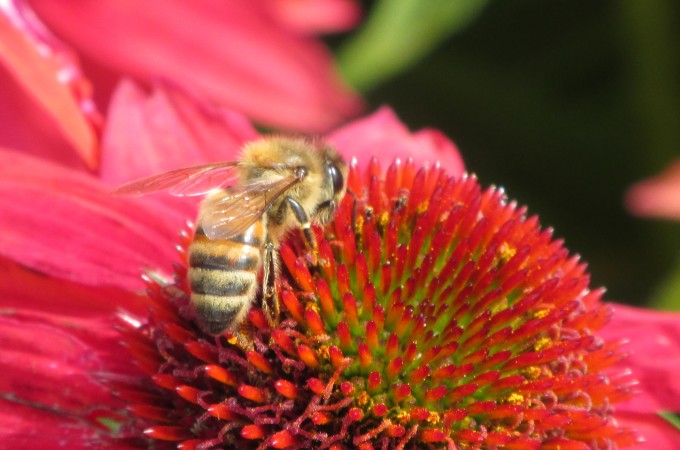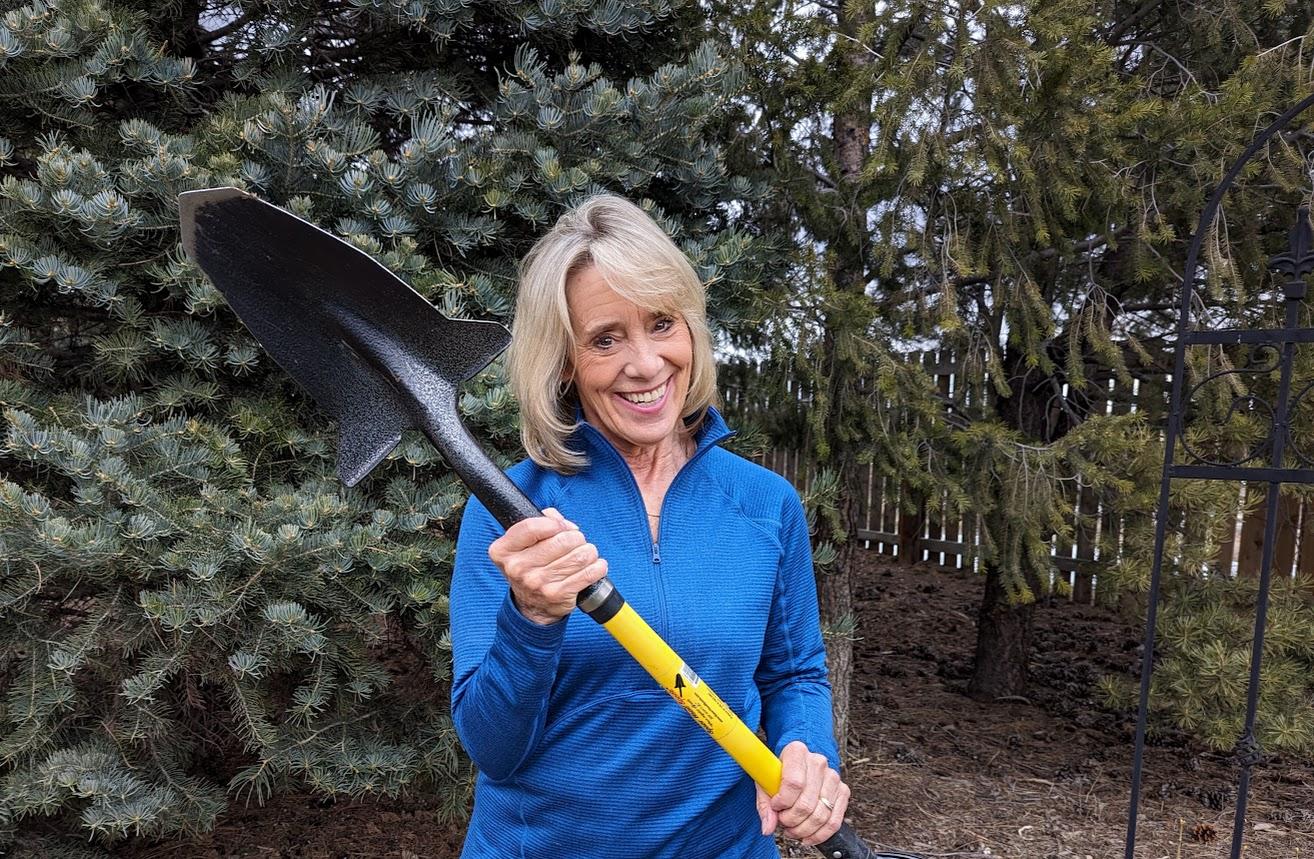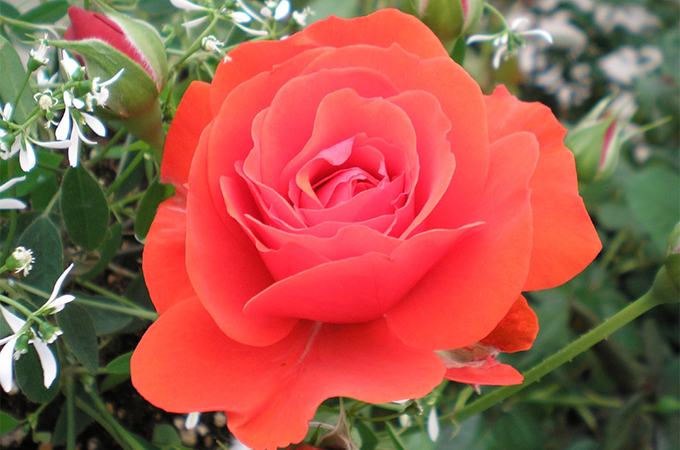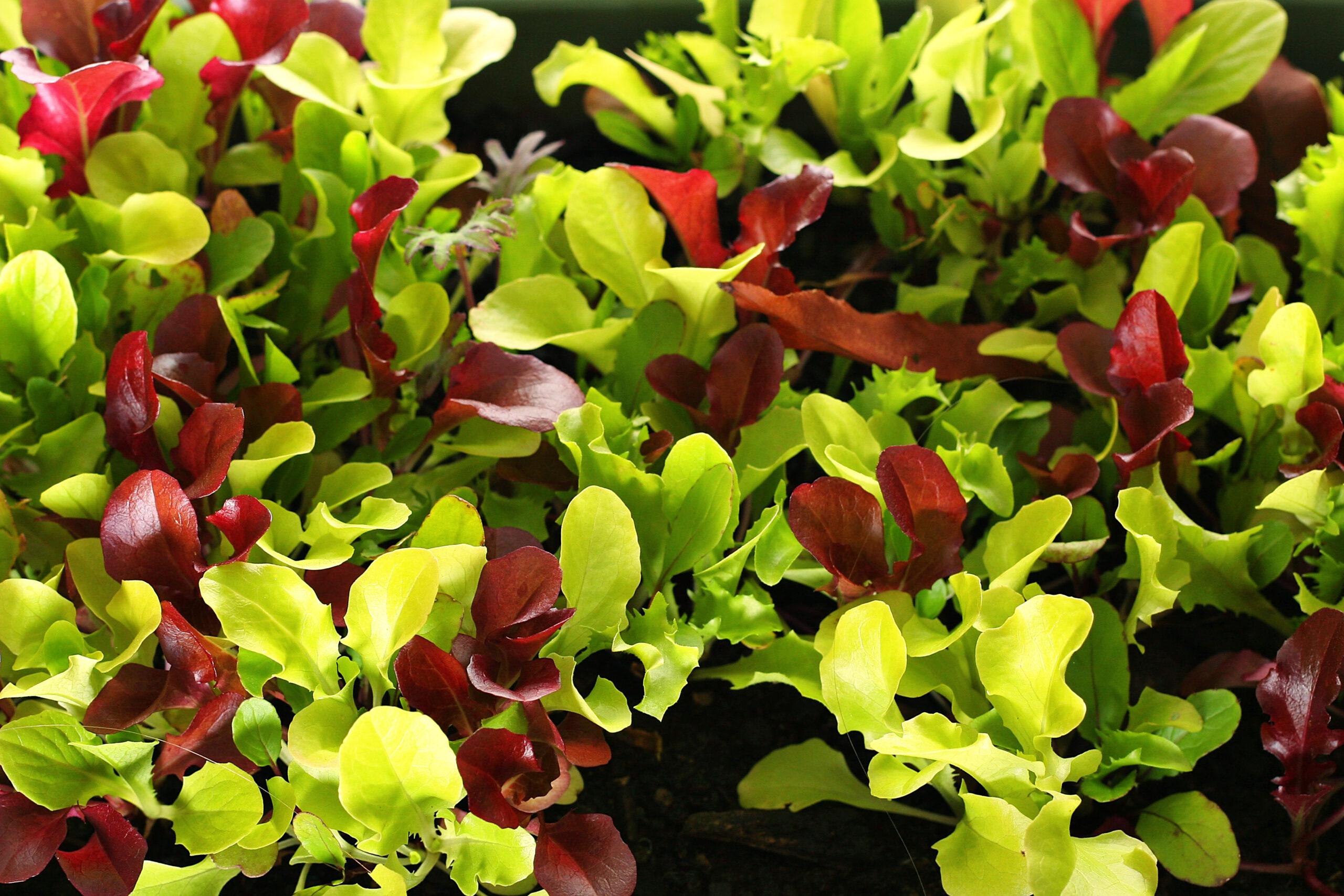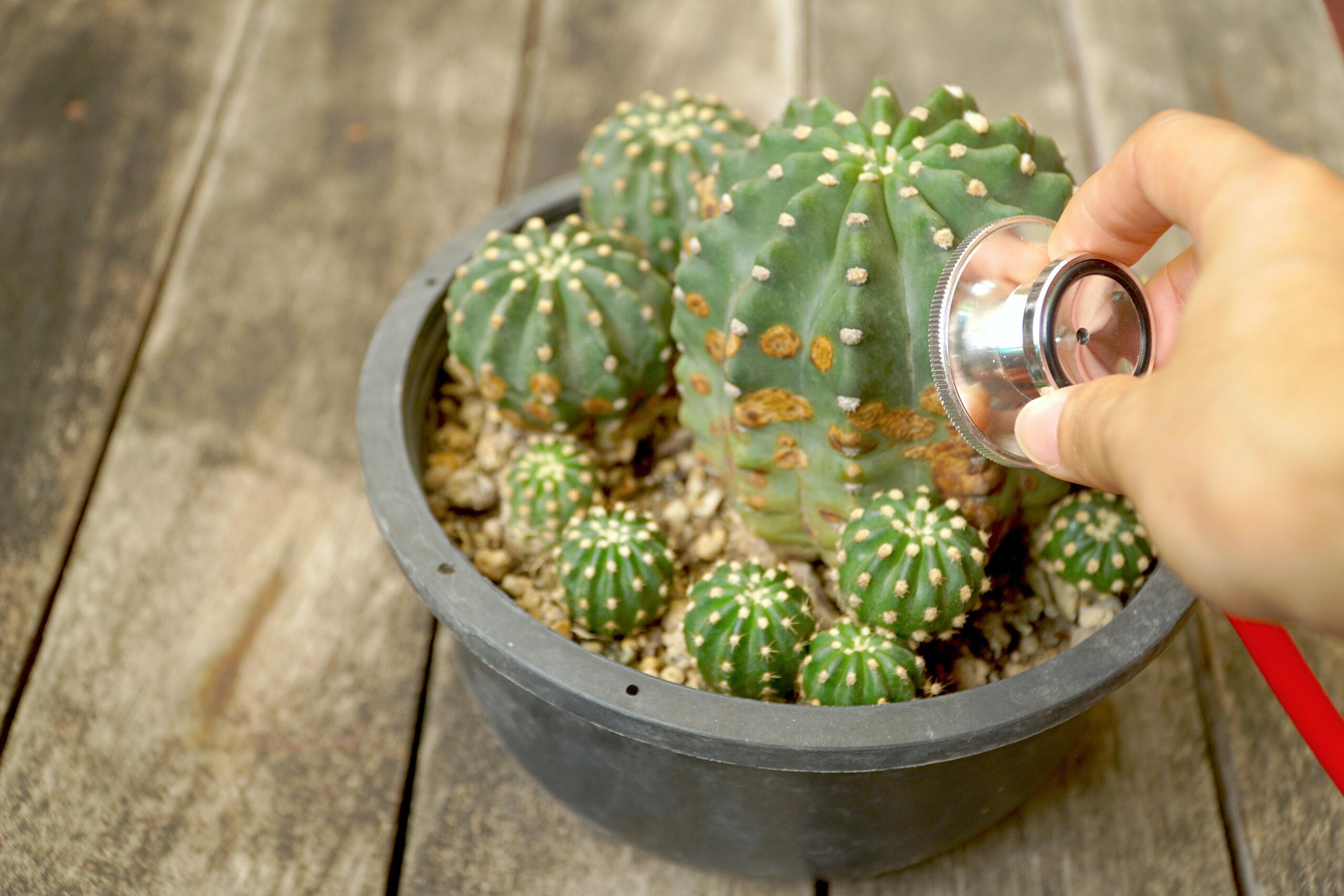Our recent monsoon rains have helped ease the blast of heat that came with the first half of our summer, but we all know there are more sizzling days ahead. To help your garden thrive during our ninety-plus-degree days, why not choose from some of the heat-tolerant perennials that are among the rock stars in Tagawa’s Perennials Department?
Here are just a few options for some great heat-loving plants.
Whether you call it “tickseed” or “coreopsis”
This trusty perennial goes by both names, and it’s a keeper whatever you call it. The variety “Zagreb,” pictured below, is especially inviting for its fine, soft foliage.
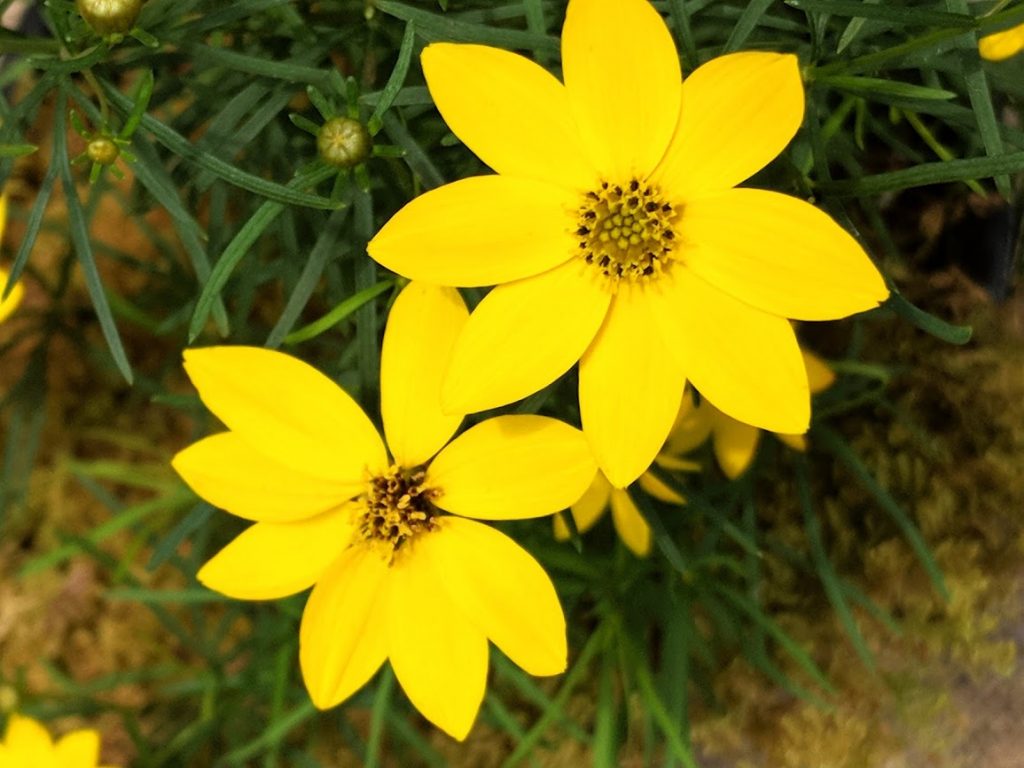
Coreopsis is “purr-fect” for that spot in your garden that needs a pop of yellow. It comes in a wide selection of heights and flower patterns, including one of my favorites, the frilly-edged “Jethro Tull,” pictured below.

Coreopsis isn’t xeric or drought-tolerant. It does best with some regular irrigation, but it’s certainly no water hog, either. As long as it has well-drained soil and full sun, it will perform all season long. Deadheading (removing the fading blossoms back to the next set of leaves) will keep the blossoms coming.
Ask for “catmint,” not “catnip”
As a beekeeper, I’m always looking for plants that will please my “girls,” the female honey bees that do all of the foragings for the hive. Catmint is always one of the first perennials to flower in the spring, and the bees love it!!

Catmint comes in a variety of sizes. The sweet lavender flowers may be tiny, but they’re loaded with nectar, judging from the bee’s visits when the plant is in bloom. The velvety foliage is fragrant in its own right, which makes it deer and bunny resistant.
Catmint will thrive in moderate to somewhat dry conditions. The plants may flop open if they are over-watered. My catmint finishes its first flowering in late June. I cut it back hard and get another round of flowers in mid- to late summer.
Some varieties of catmint will spread from seed. Talk to our Perennials Department staff for guidance on which variety would be best for your garden.
Put penstemons on your list!
Penstemon, also known as “beardtongue,” belongs in every sunny garden. They take the heat and put on a beautiful show while they’re doing it!
Penstemons come in a wide array of colors. “Red Rocks,” pictured above, is one of the showiest. Many of the penstemon flowers are big enough for full-sized bumble bees to enter, so expect some of these gentle visitors when the plants are in bloom.
Penstemons need full sun. They prefer deep watering when the top layer of soil has dried down. Cut back the upright stems just below the lowest flowers as the blossoms fade and these hardy perennials will keep the show coming!
Lavender: one of the queens of hot weather gardens
It’s wonderfully fragrant. It’s easy to grow. And the bees love it! Why wouldn’t you grow lavender?

Lavender doesn’t ask for much. It wants at least six hours of full sun. The planting hole should be amended with perlite or some form of grit to encourage excellent drainage. And it should get deep, but infrequent watering. Meet those basic requirements, all of the many forms of perennial lavender will thrive in hot spots in your landscape.
Lavender variety plant heights and bloom times vary. Our Perennials Department staff can help guide you. Check out my blog from mid-July for more on this elegant herb.
Coneflowers: a workhorse in a hot weather garden
Want a plant that works as hard in your garden as you do? Plant coneflowers, also know as “echinacea.”
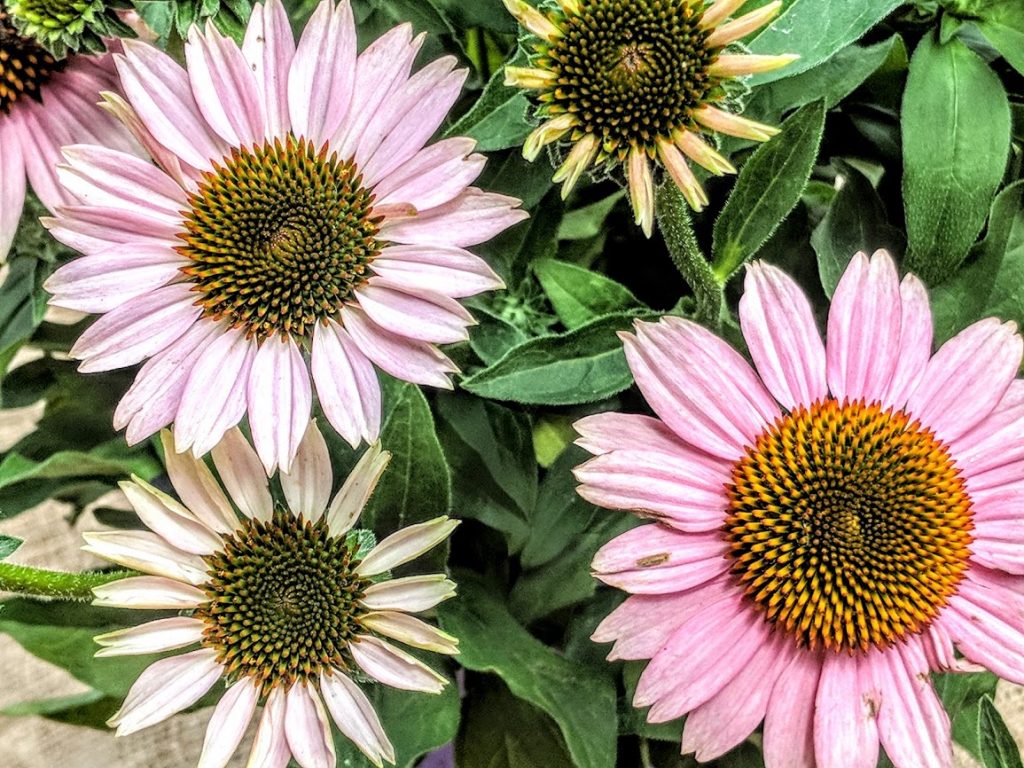
As seen above and at the top of the blog, coneflower blossoms can be yellow, pink or white or bold shades of burgundy, deep pink, orange or purple.
Coneflower blossoms are held high on stiff, upright stems. The flowers are especially popular with honey bees and other pollinators.
Coneflowers require full sun. Their moisture needs are somewhat adaptable, from moderate to slightly dry. You’ll find they laugh at the heat, and just keep coming back for more!
Last, but not least: Russian Sage
I’ve saved Russian sage for the end of this short list because this plant isn’t for every gardener or every setting. Russian sage can be a bully!

I plant lots and lots of Russian sage for my honey bees. Each spring, I’d swear it was dead. But by late spring, it’s come to life, and by mid-summer, it’s put on lots of new growth and is loaded with tiny nectar-packed flowers…. a real luxury for the bees in the summer heat.
But know that Russian sage was born to run. It will spread like crazy if you let it. If you can give it its own space, and don’t mind if it fills it fairy aggressively (as in my case), no problem. But it’s not likely to “Sit! Stay!” unless you’re careful to put down some landscape fabric to discourage it’s spread.
Still, once Russian sage gets established, after a couple of seasons of growth, it’s just about indestructible. The only thing that it won’t tolerate is significant shade or soggy soil.
